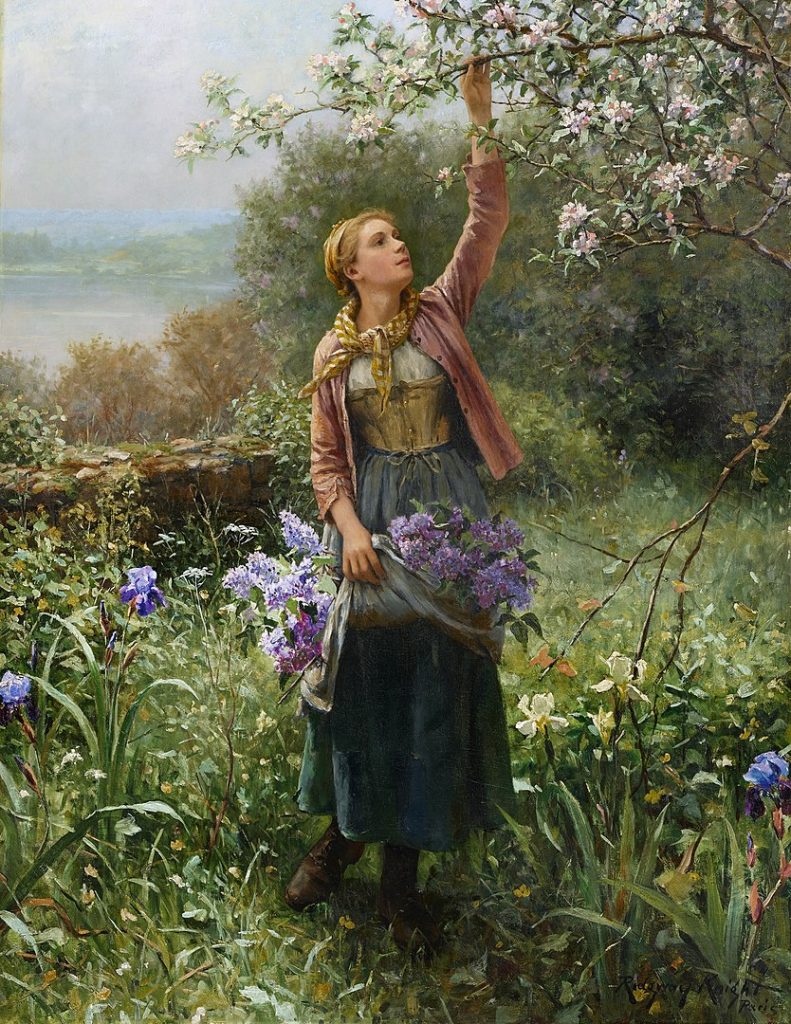
Daniel Ridgway Knight (1839–1924) was an American artist who distinguished himself in the international art scene with his idyllic and meticulously detailed paintings of French peasant women in outdoor settings. Born on March 15, 1839, in Chambersburg, Pennsylvania, Knight’s artistic journey began in the United States but found its true expression and recognition in France, where he spent the majority of his career.
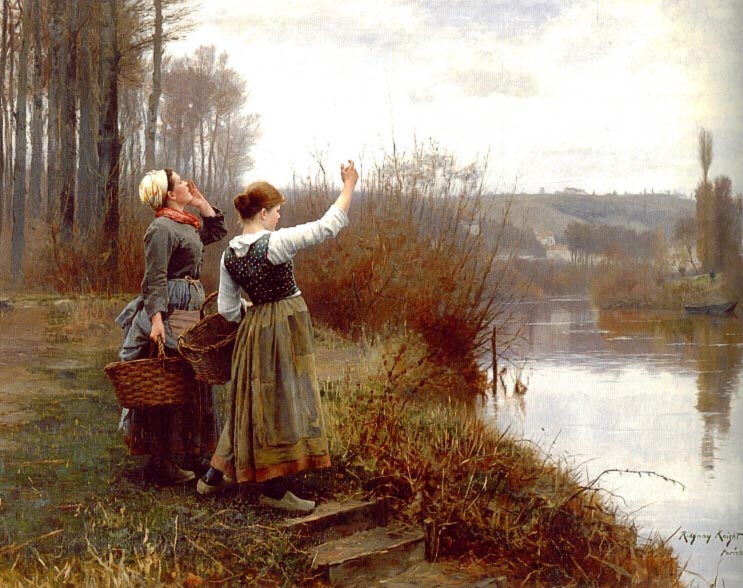
Knight’s early artistic education took place at the Pennsylvania Academy of the Fine Arts in Philadelphia, where he was influenced by the works of the Hudson River School and the burgeoning American realist movement.
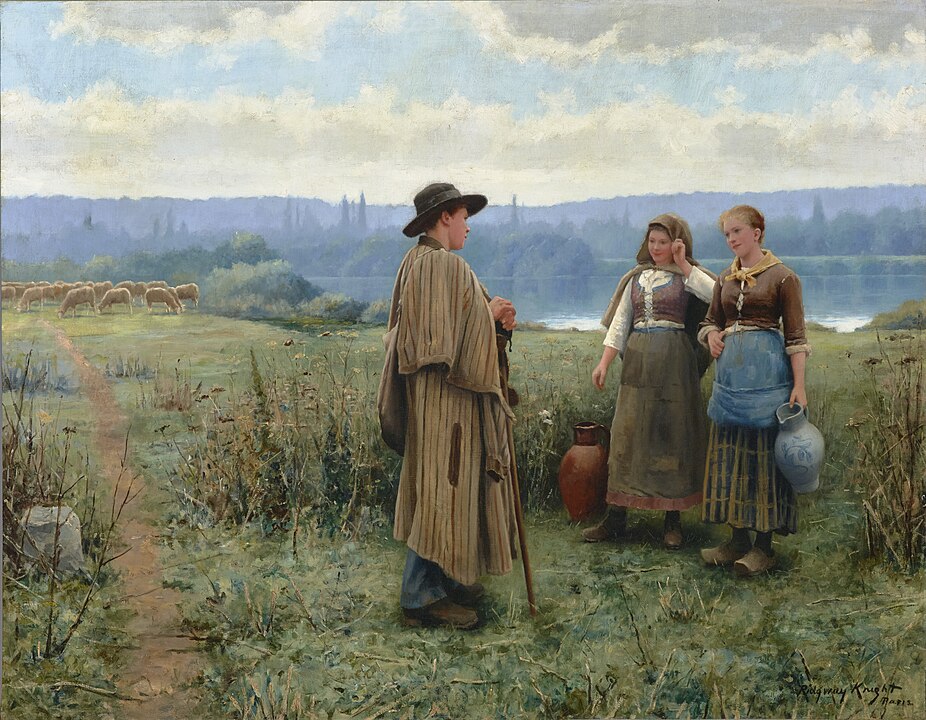
Seeking broader horizons and the vibrant art scene of Europe, Knight moved to Paris in 1861 to study at the École des Beaux-Arts, one of the most prestigious art schools of the time. Here, he was tutored under academic painters such as Charles Gleyre and Jean-Louis-Ernest Meissonier, who were known for their classical approach to art and meticulous attention to detail.
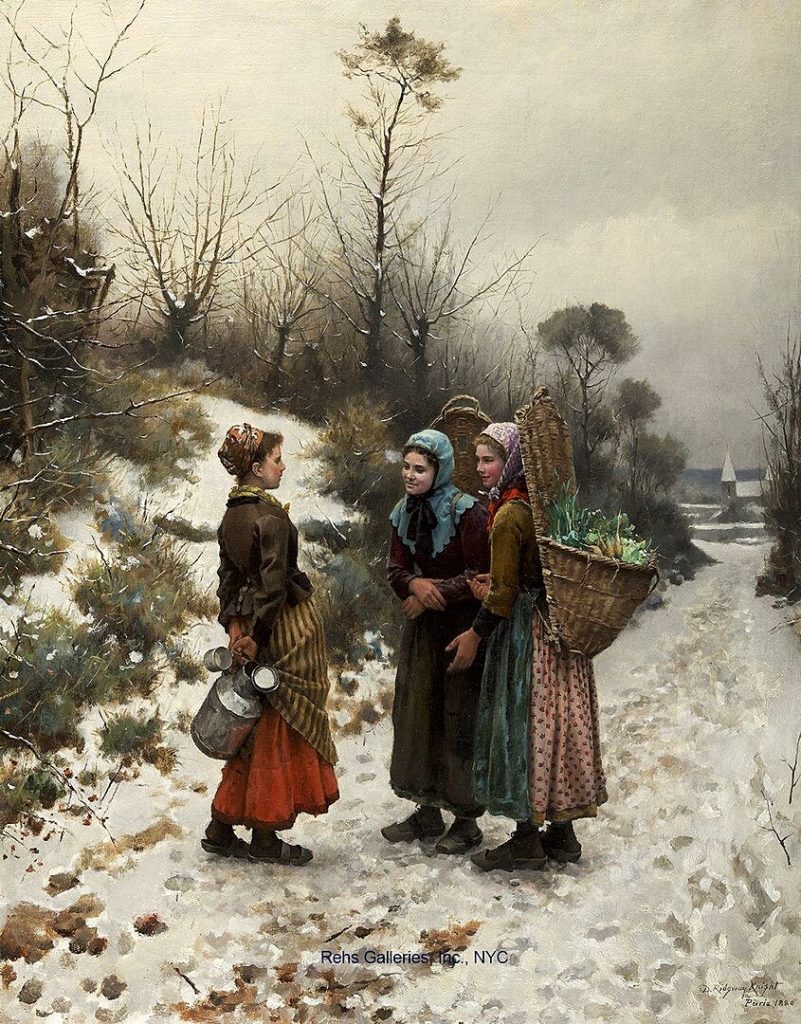
The outbreak of the American Civil War and subsequent return to the United States temporarily interrupted Knight’s studies. However, his stay in America during this tumultuous period was short-lived. The allure of France’s rich cultural landscape and the artistic freedom it offered drew him back in 1871, this time to the artist colony in Barbizon.
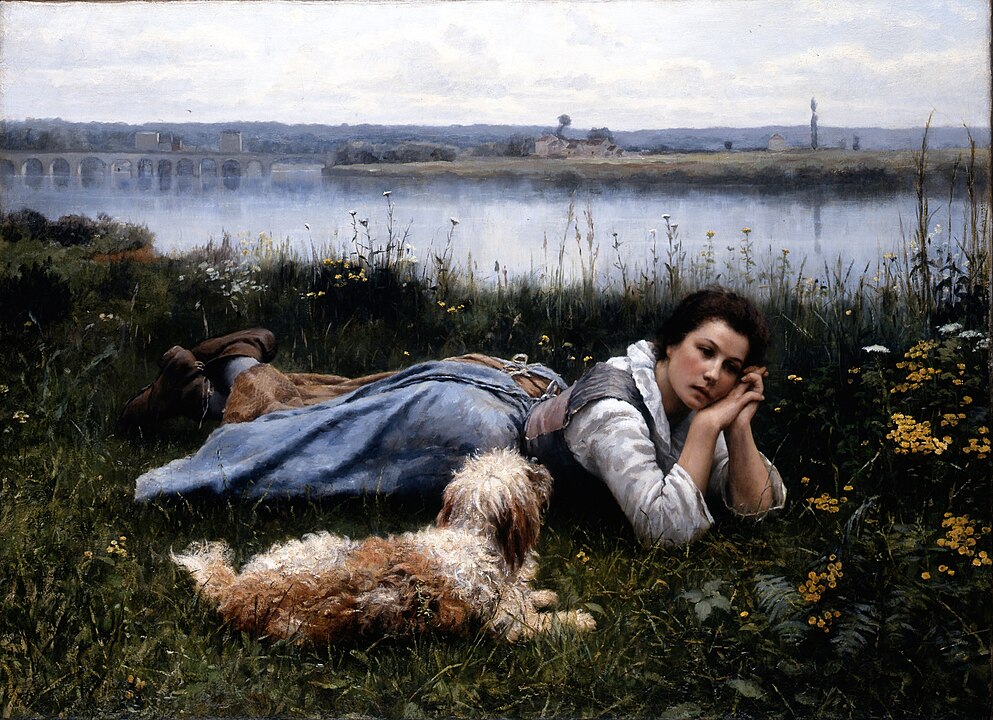
The Barbizon School, known for its naturalistic approach to landscape painting and emphasis on plein air painting, significantly influenced Knight’s artistic development. However, it was his relocation to Rolleboise, a picturesque village along the Seine, that truly defined his career.
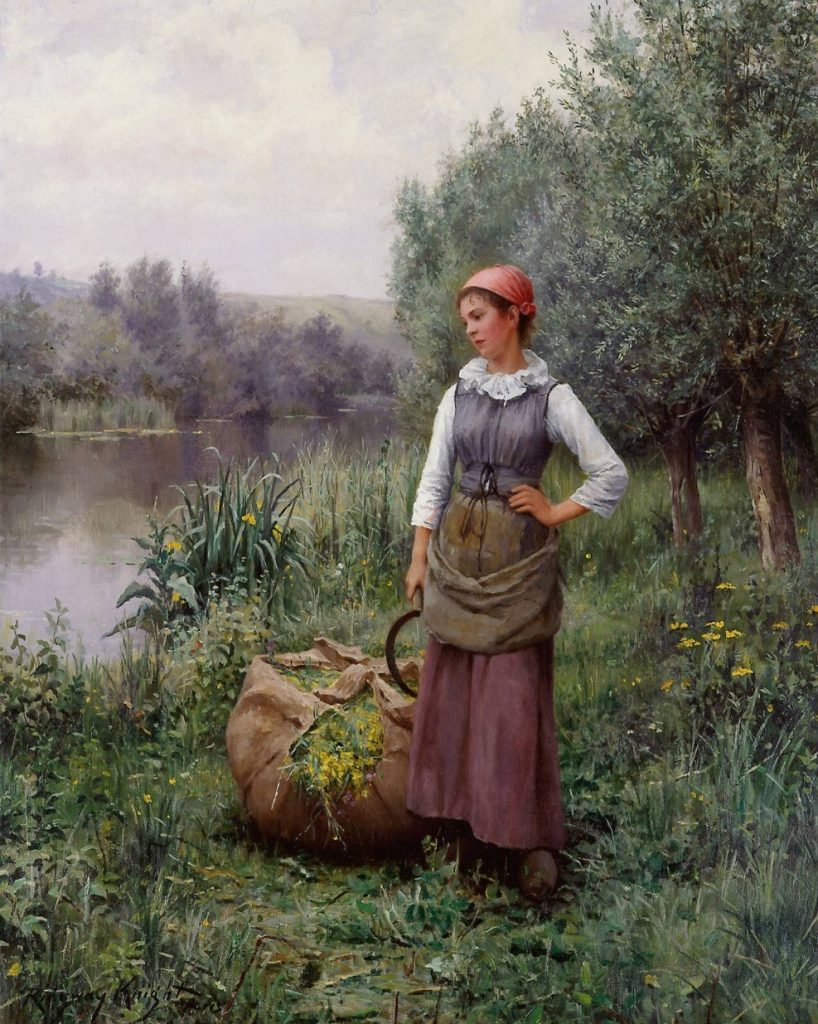
In Rolleboise, Knight discovered the subject matter that would dominate his oeuvre: the daily lives of peasant women in the French countryside. His paintings from this period, such as “Hailing the Ferry” (1888) and “The Shepherdess of Rolleboise” (1896), are celebrated for their vibrant realism, luminous color palette, and the serene, almost idyllic quality of their compositions. Knight’s works stand out for their detailed portrayal of individual figures within lush, meticulously rendered landscapes, reflecting a harmonious blend of human activity and natural beauty.
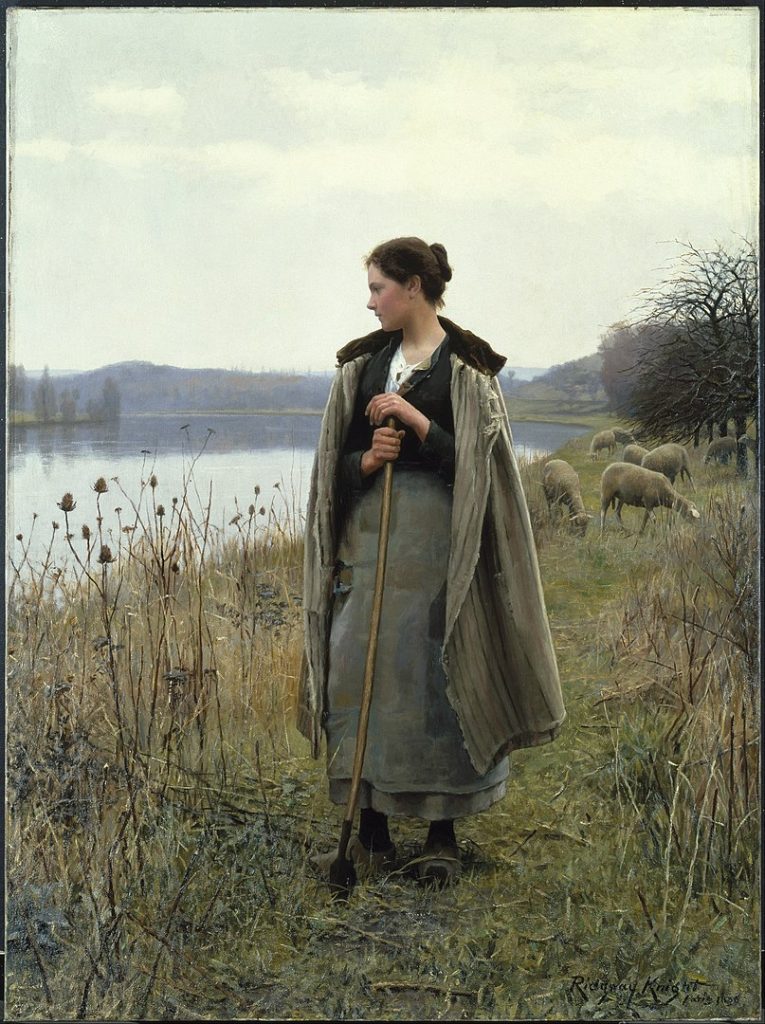
Knight’s fascination with the French peasantry was not merely an artistic preference but also reflected a broader trend among 19th-century artists who sought to capture the essence of rural life. Unlike the often somber and socially critical works of some of his contemporaries, Knight’s paintings are characterized by a sense of contentment and peace, offering a romanticized view of rural existence that found favor with both critics and the public.
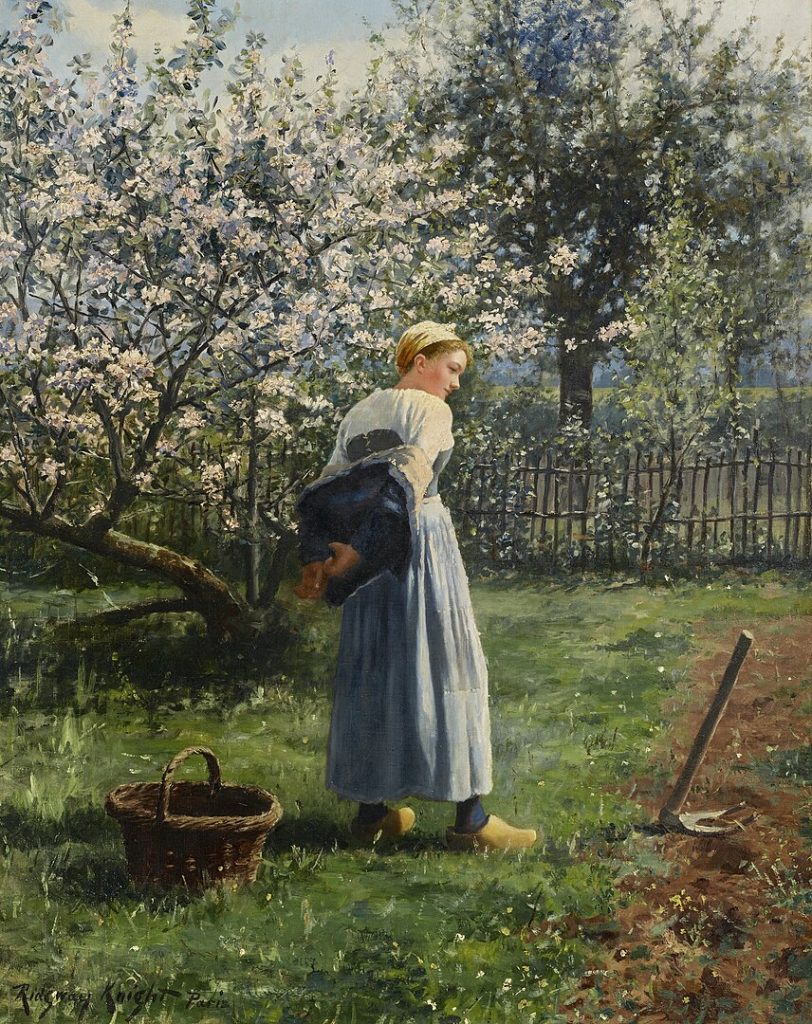
Throughout his career, Knight received numerous accolades for his work, including recognition from the Paris Salon, where he exhibited regularly. His paintings were also popular in the United States, contributing to a transatlantic reputation that few American artists of his time achieved. Knight’s success afforded him a comfortable life in France, where he continued to paint and exhibit until his death on March 9, 1924, in Paris.
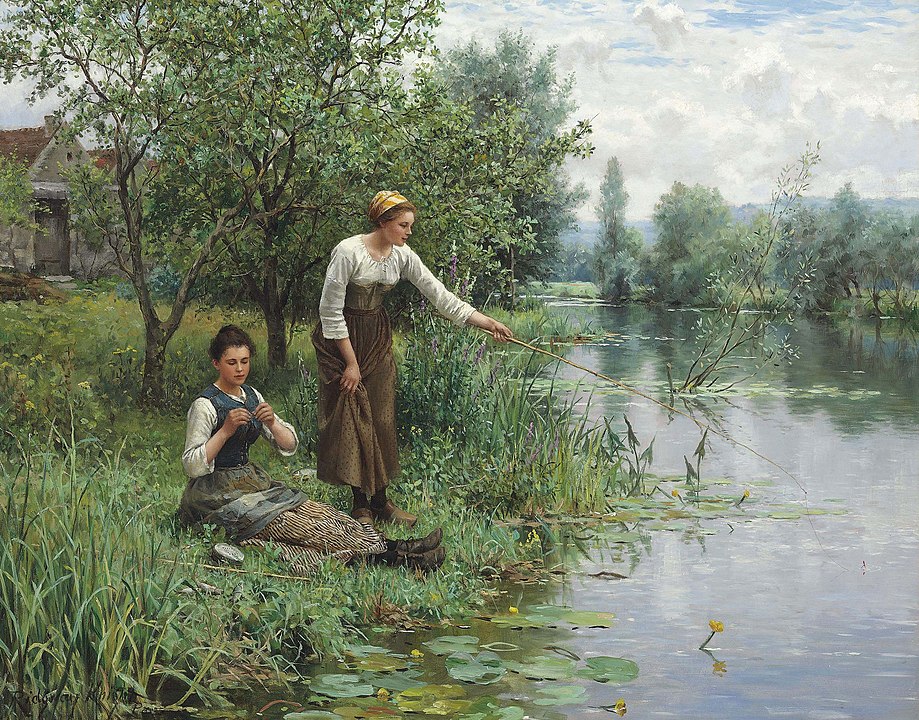
Today, Daniel Ridgway Knight is remembered as a master of genre painting, whose works offer a captivating glimpse into the rural French landscape of the late 19th and early 20th centuries. His ability to combine technical precision with a profound appreciation for the beauty of everyday life ensures his place among the distinguished American expatriate artists who found inspiration and acclaim abroad. Through his paintings, Knight not only celebrated the simplicity and dignity of peasant life but also left a lasting legacy that continues to enchant and inspire.




